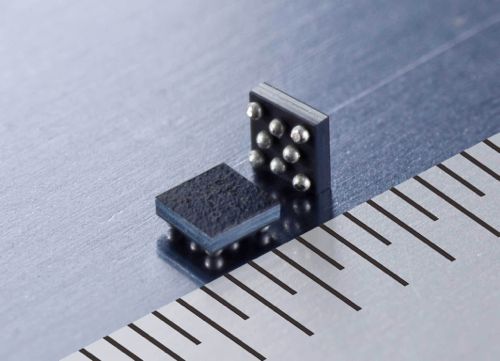Yamaha shrinks smartphone magnetometer to 1.5mm

Smartphones come with dozens of sensors: gyroscopes, accelerometers, proximity sensors, ambient light sensors, barometers, and magnetometers, all for the sake of adding to the device's "situational awareness" without adding significantly to its size and weight.
Japan's Yamaha Corporation on Friday announced it has collapsed the size of its magnetometers by 56% to just 1.5 square millimeters, and claims to have created the world's smallest tri-band geomagnetic sensor for smartphones and tablets.
While most magnetometers are used as compasses in smartphones, Deutsche Telekom has explored the possibility of using them as an interface sensor for "around-device interaction," where users can make Kinect-like gestures in 3D space to interact with their phone. This includes gestures for zooming, flipping pages, accepting or rejecting calls, launching apps, or controlling the phone's media player.
The main advantage of something like this is that it requires no additional hardware and could be built off of the commonly used magnetic sensor, which Yamaha has ever so kindly made smaller.
Yamaha's Tri-axial Geomagnetic Sensor Integrated Circuit, YAS532, will begin sampling to manufacturers in September.
